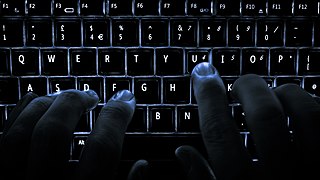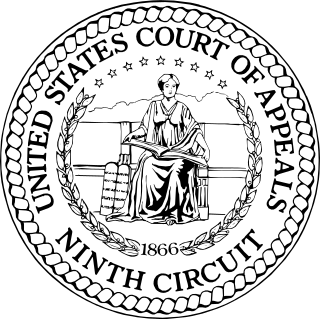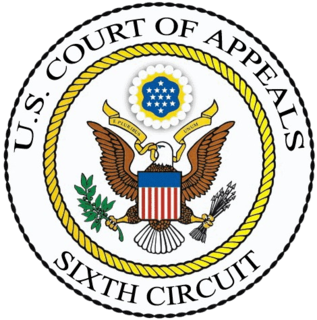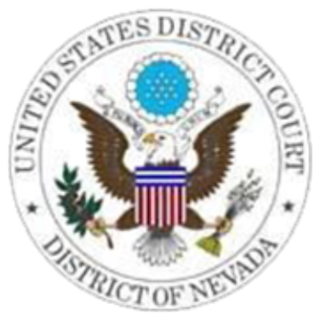The Morris worm or Internet worm of November 2, 1988, was one of the oldest computer worms distributed via the Internet, and the first to gain significant mainstream media attention. It also resulted in the first felony conviction in the US under the 1986 Computer Fraud and Abuse Act. It was written by a graduate student at Cornell University, Robert Tappan Morris, and launched on November 2, 1988, from the computer systems of the Massachusetts Institute of Technology.

Robert Tappan Morris is an American computer scientist and entrepreneur. He is best known for creating the Morris worm in 1988, considered the first computer worm on the Internet.
The Computer Fraud and Abuse Act of 1986 (CFAA) is a United States cybersecurity bill that was enacted in 1986 as an amendment to existing computer fraud law, which had been included in the Comprehensive Crime Control Act of 1984. The law prohibits accessing a computer without authorization, or in excess of authorization. Prior to computer-specific criminal laws, computer crimes were prosecuted as mail and wire fraud, but the applying law was often insufficient.
Computer fraud is a cybercrime and the act of using a computer to take or alter electronic data, or to gain unlawful use of a computer or system. In the United States, computer fraud is specifically proscribed by the Computer Fraud and Abuse Act, which criminalizes computer-related acts under federal jurisdiction.

Computer trespass is a computer crime in the United States involving unlawful access to computers. It is defined under the Computer Fraud and Abuse act.
Protected computers is a term used in Title 18, Section 1030 of the United States Code, which prohibits a number of different kinds of conduct, generally involving unauthorized access to, or damage to the data stored on, "protected computers". The statute, as amended by the National Information Infrastructure Protection Act of 1996, defines "protected computers" as:
a computer—
(A) exclusively for the use of a financial institution or the United States Government, or, in the case of a computer not exclusively for such use, used by or for a financial institution or the United States Government and the conduct constituting the offense affects that use by or for the financial institution or the Government; or
(B) which is used in interstate or foreign commerce or communication, including a computer located outside the United States that is used in a manner that affects interstate or foreign commerce or communication of the United States.
The National Information Infrastructure Protection Act was Title II of the Economic Espionage Act of 1996, as an amendment to the Computer Fraud and Abuse Act.
United States v. Drew, 259 F.R.D. 449, was an American federal criminal case in which the U.S. government charged Lori Drew with violations of the Computer Fraud and Abuse Act (CFAA) over her alleged cyberbullying of her 13-year-old neighbor, Megan Meier, who had committed suicide. The jury deadlocked on a felony conspiracy count and acquitted Drew of three felony CFAA violations, but found her guilty of lesser included misdemeanor violations; the judge overturned these convictions in response to a subsequent motion for acquittal by Drew.

In re DoubleClick Inc. Privacy Litigation, 154 F. Supp. 2d 497 ("DoubleClick"), had Internet users initiate proceedings against DoubleClick, alleging that DoubleClick's placement of web cookies on computer hard drives of Internet users who accessed DoubleClick-affiliated web sites constituted violations of three federal laws: The Stored Communications Act, the Wiretap Statute and the Computer Fraud and Abuse Act.

LVRC Holdings v. Brekka 581 F.3d 1127, 1135 is a Ninth Circuit Court of Appeals Decision that deals with the scope of the concept of "authorization" in the Computer Fraud and Abuse Act. The major finding of this case is that even if an employee accesses a computer for an improper purpose, such as one that violates the duty of loyalty to their employer, the employee remains authorized to access the computer until the employer revokes the employee's access. The findings of this case were upheld by another Ninth Circuit decision in United States v. Nosal, 676 F.3d 854 and are the current law in this circuit.

United States v. Nosal, 676 F.3d 854 was a United States Court of Appeals for the Ninth Circuit decision dealing with the scope of criminal prosecutions of former employees under the Computer Fraud and Abuse Act (CFAA). The Ninth Circuit's first ruling established that employees have not "exceeded authorization" for the purposes of the CFAA if they access a computer in a manner that violates the company's computer use policies—if they are authorized to access the computer and do not circumvent any protection mechanisms.
United States of America v. Ancheta is the name of a lawsuit against Jeanson James Ancheta of Downey, California by the U.S. Government and was handled by the United States District Court for the Central District of California. This is the first botnet related prosecution in U.S history.

In United States v. John, 597 F.3d 263 (2010) United States Court of Appeals for the Fifth Circuit interpreted the term "exceeds authorized access" in the Computer Fraud and Abuse Act 18 U.S.C. §1030(e)(6) and concluded that access to a computer may be exceeded if the purposes for which access has been given are exceeded.

In International Airport Centers, L.L.C. v. Citrin, the Seventh Circuit Court of Appeals evaluated the dismissal of the plaintiffs' lawsuit for failure to state a claim based upon the interpretation of the word "transmission" in the Computer Fraud and Abuse Act, 18 U.S.C. § 1030. Jacob Citrin had been employed by IAC, who had lent him a laptop for use while under their employment. Upon leaving IAC, he deleted the data on the laptop before returning it to IAC. The Court of Appeals decided to reverse the decision and reinstated IAC's lawsuit.
United States v. Morris may refer to:
Lee v. PMSI, Inc., No. 10-2094, was a case in the United States District Court for the Middle District of Florida about whether the Computer Fraud and Abuse Act (CFAA) makes it illegal for an employee to violate an employer's acceptable use policy. The court ruled that violating an employer's policy did not "exceed authorization" as defined by the CFAA and was not illegal under the act.

Pulte Homes, Inc. v. Laborers' International Union of North America, 648 F.3d 295, is a Sixth Circuit Court of Appeals case that reinstated a Computer Fraud and Abuse Act ("CFAA") claim brought by an employer against a labor union for "bombarding" the company's phone and computer systems with emails and voicemail, making it impossible for the company to communicate with customers. It held that causing a transmission that diminishes a plaintiff's ability to use its systems and data constitutes "causing damage" in violation of the CFAA.

United States v. Kane, No 11-mj-00001, is a court case where a software bug in a video poker machine was exploited to win several hundred thousand dollars. Central to the case was whether a video poker machine constituted a protected computer and whether the exploitation of a software bug constituted exceeding authorized access under Title 18 U.S.C. § 1030(a)(4) of the Computer Fraud and Abuse Act (CFAA). Ultimately, the Court ruled that the government’s argument failed to sufficiently meet the “exceeding authorized access” requirement of Title 18 U.S.C. § 1030(a)(4) and granted the Defendants’ Motions to Dismiss.

hiQ Labs, Inc. v. LinkedIn Corp, 938 F.3d 985, was a United States Ninth Circuit case about web scraping. The 9th Circuit affirmed the district court's preliminary injunction, preventing LinkedIn from denying the plaintiff, hiQ Labs, from accessing LinkedIn's publicly available LinkedIn member profiles. hiQ is a small data analytics company that used automated bots to scrape information from public LinkedIn profiles.
Van Buren v. United States, 593 U.S. ___ (2021), was a United States Supreme Court case dealing with the Computer Fraud and Abuse Act (CFAA) and its definition of "exceeds authorized access" in relation to one intentionally accessing a computer system they have authorization to access. In June 2021, the Supreme Court ruled in a 6–3 opinion that one "exceeds authorized access" by accessing off-limit files and other information on a computer system they were otherwise authorized to access. The CFAA's language had long created a circuit split in case law, and the Court's decision narrowed the applicability of CFAA in prosecuting cybersecurity and computer crime.









